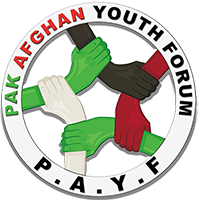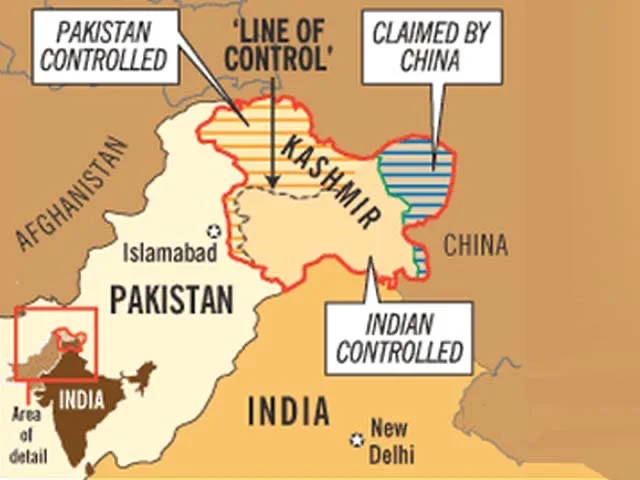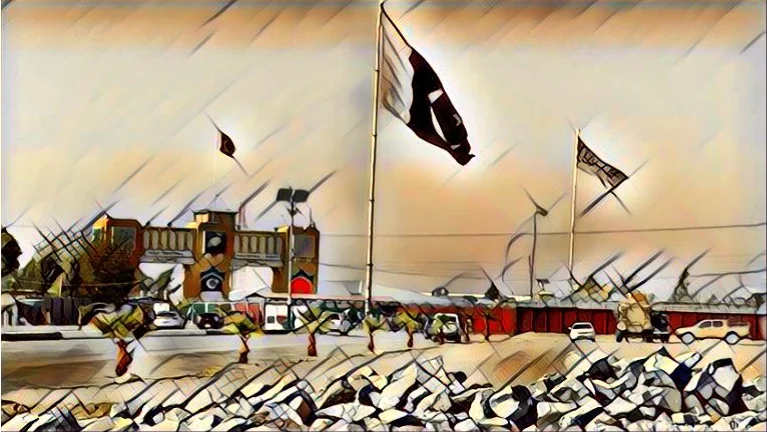Kashmir’s Struggle: A Battle of Maps
We, the people of Pakistan, know too well the weight of maps. To the world, they may appear as nothing more than neat lines, drawn with precise measurements and clear borders. But for us, these lines are far from neutral—maps are weapons, each drawn with intent, each one a declaration of dominance, each one reshaping the identity of Kashmir.
Since 1947, the fight for Kashmir has been a battle on multiple fronts. Yes, there have been wars—fierce, bloody battles fought on the ground, where lives were lost, borders were crossed, and cities were torn apart. But behind the scenes, on the pages of official maps, an equally ruthless war rages on. These maps are not just tools to show geography; they are tools of power, tools of control. When India redraws its maps, it isn’t just changing boundaries—it’s rewriting history, erasing our claims, and asserting that the land, the people, the identity of Kashmir belongs to them.
India’s Cartographic Moves and the 2019 Map Controversy
In August 2019, India made a bold move—a move that sent shockwaves through our land and the world. By revoking Article 370, India took away Kashmir’s special status, an illegal decision that crushed the dreams of millions of Kashmiris, and those of us in Pakistan who have fought for their rights. But what followed was even more disturbing. India’s new map, showing Kashmir as part of its own territory, divided the region into two union territories, disregarding not only our sovereignty but also 18 United Nations Security Council resolutions that recognized Kashmir as a disputed territory.
We couldn’t stay silent. In 2020, Pakistan responded with its own map, reaffirming our stance—that Kashmir is a disputed land, not India’s to claim. We marked the regions of Azad Jammu & Kashmir and Gilgit-Baltistan as part of our territory, but India had already taken that land from us in their eyes. The maps on paper were no longer mere representations—they were weapons. And they were being used against us. These maps didn’t just redraw borders; they forced a narrative, a false story of who Kashmir belongs to.
Geopolitical Mapping: India, Pakistan, and China’s Claims
But the struggle doesn’t stop with India and Pakistan. China, too, has its own claims, particularly over Aksai Chin—a barren region of great strategic importance, which India claims as its own. When India draws its maps, it shows all of Kashmir as its territory, including the areas we hold, and even the regions China controls. We see this as a constant reminder of our struggle, of how the world’s major powers are lining up against us, each one redrawing borders to suit their interests, without ever considering the lives of those who actually live on the land.
The reality is, for us, Kashmir is not just a piece of land. It is home to millions of people who have been caught in the crossfire of foreign powers. Every new map issued by any country is another strike against the Kashmiris who have already endured decades of violence, oppression, and loss. But as we fight for our own territorial integrity, we also carry the burden of a people whose pain we have shared. We are not just fighting for land—we are fighting for their voices to be heard, for their dignity to be restored.
Escalation of Cartographic Conflicts
The tension has only grown in recent years. In 2023, India renamed 16 locations in Arunachal Pradesh—a region that, like Kashmir, is disputed by China. China immediately responded with its own maps, reaffirming its sovereignty over Aksai Chin and Arunachal Pradesh. The implications were clear: these maps weren’t just about names; they were about power. About who controls the region, who controls the future.
As these cartographic battles unfold, they are no longer just about who holds which piece of land—they are about identity. They are about a battle over who gets to tell the story of Kashmir. And in this battle, the people of Kashmir are the silent victims. The people of Kashmir—our brothers and sisters—are not just casualties of war; they are victims of a global game of power. Their hopes, their dreams, their futures are written into the ink of these maps—maps that are drawn by those who never hear their cries.
The Legacy of Partition: Maps as Instruments of Division
Our history of conflict with India traces back to the Partition of 1947, when the British drew lines across the subcontinent, dividing families, communities, and ultimately, nations. Kashmir, once an independent kingdom, was left in limbo. Maharaja Hari Singh, desperate to preserve his autonomy, eventually signed the Instrument of Accession to India under duress after an invasion by tribal forces, triggering the first of many wars between India and Pakistan.
Since that moment, maps have been used as tools of division. The maps drawn by foreign powers, by colonial authorities, and by governments with vested interests continue to haunt us. Today, the Line of Control (LoC) stands as one of the most militarized borders in the world, a daily reminder of the bloodshed and heartache that these lines have caused. Over 900,000 Indian soldiers patrol that line, while our people live in the shadows of those maps—unable to cross, unable to live freely. But we are not merely concerned with the maps or the land. Our hearts ache for the Kashmiris, who remain trapped between these lines. Their suffering is our suffering, their struggle is our struggle.
International Reactions: A Divided Global Response
The world looks on, divided. Some recognize Kashmir’s disputed status, while others stay silent, allowing the weaponization of maps to continue. Pakistan’s Prime Minister, Anwaar-ul-Haq Kakar, condemned India’s 2019 map revision as an “illegal attempt to alter reality,” yet India’s Foreign Minister brushed it aside as “political absurdity.” China, too, rejected India’s claims, reinforcing its own territorial integrity. The United Nations may call Kashmir a disputed area, but what difference does that make when the very identity of the region is being erased by maps designed to control, not resolve?
The international community may be divided, but we will never turn our backs on the people of Kashmir. Our position is clear, and our support for their rights remains unwavering. We stand with them in their struggle for self-determination. Their voices may be drowned out by powerful nations with their redrawn borders, but we will continue to amplify them, loud and strong, on every stage.
Also See: Kashmir and International Law: Between Promises and Political Deadlocks
Maps as Tools of Power
For us, maps are not just geography—they are a constant reminder of our struggle, our pain, our loss. They are tools of power, drawn by those who seek to erase our reality, who seek to dominate not just our land, but our future. These maps are not neutral; they are weapons. They are used to assert territorial control, to rewrite history, and to justify military interventions. In the end, the fight for Kashmir isn’t just about the land—it is about which version of Kashmir will survive. Whose history will prevail?
As long as maps remain tools of assertion rather than peace, Kashmir’s fate will remain in the hands of those who redraw its borders. But we will never stop fighting for the Kashmiris, for their right to decide their own destiny. And the people of Kashmir will continue to live in the shadow of these maps, their lives decided by forces beyond their control, their voices drowned out by the lines that others have drawn in their name.
We are with them, today and always.
This article reflects the author’s perspective and not the official views of the Pak-Afghan Youth Forum (PAYF).



